By Mike Gulett –
The Iso Grifo Spider sold recently at a RM Sotheby’s auction at the junkyard in Southern California where it had been stored for a few decades.
It achieved a price of $1,875,000, a record for an Iso Grifo GL, more than the $1,760,000 that the Iso Grifo Prototype Coupe sold for at the Gooding January 2018 Scottsdale, Arizona auction even though the Coupe was in excellent condition and the Spider was in junkyard-find condition.
These two Grifo prototypes share many design features, some of which did not make it into production.
The Spider has led a much tougher life than the Coupe having spent many years in a junkyard where it was allowed to rot and rust. And this after a front end accident was not accurately repaired and thus the front “nostrils” have been deleted (see the photos below).
The Coupe, however, led a pampered life in a museum and under the care of loving collectors (including a friend of mine many years ago) and it has been restored twice I believe. The Spider has been painted a few times and had the previously mentioned front end crash damage “repaired” but has not been restored as far as I know.
I wonder if the Spider has had any reinforcement added to take into account that the top has been deleted. I suppose if it is a show car and not driven much then it does not matter.
I hope the new owner will bring out this special car, after a proper restoration, for all to see.
Maybe someday we will see both the Coupe and the Spider side by side.
Grifo Front and Hood Design
There are many differences in the front end style as you can see from these photos. From the painting below it looks like Giugiaro changed his mind on some features between the time this painting was done and when the A3/L Coupe was made. This painting more closely resembles the Spider hood design.
The hood design changed from the drawing to the two prototypes and finally to production. The Coupe Prototype had a hood scoop with a crease running back to front and louvers. The Spider lost the scoop and the crease was changed but it kept the louvers. The production version did not have a scoop, louvers or creases but added a small hump.
A Brief History
The Iso Grifo A3/L (the Coupe prototype), debuted at the Turin Auto Show in 1963 along with a similarly named Iso Grifo A3/C, which had a lightweight riveted aluminum alloy body. The ‘L’ in A3/L stands for lusso (luxury) and the ‘C’ in A3/C stands for corsa (race). For such a small difference in the name there was a huge difference in the appearance and purpose of the two cars. The A3/L is a full luxury sport GT car for two. The A3/C is a racecar designed for the sole purpose of winning the 24 Hours of Le Mans where it did win the 5-Liter and above class, finishing 9th overall in 1965.
The combination of the vision of Renzo Rivolta, the engineering expertise of several key Iso employees like Pierluigi Raggi, the technical contributions of Giotto Bizzarrini (the engineer in charge of the development of the Ferrari 250 GTO) and the brilliant styling of Giorgetto Giugiaro of Bertone resulted in one of the most admired sports cars ever.
Nuccio Bertone played a critical role in the creation of the Iso Grifo. Bertone was so committed to the idea of a berlinetta for the next Iso GT that he offered to do the work. Renzo Rivolta saw the wisdom in this suggestion and thus Nuccio Bertone was key in making the Grifo a reality. Bertone even came up with the Grifo name.
The beautiful Grifo A3/L Spider was also done with motivation from Nuccio Bertone. Other than providing a rolling chassis, Iso had little involvement in the car.
The Grifo Spider was introduced on the Bertone stand at the 1964 Geneva Auto Show.
Let us know what you think in the Comments.
Photo credits:
[1] Auction photos by Patrick Ernzen ©2024 Courtesy of RM Sotheby’s.[2] The book ISORIVOLTA The Men, The Machines by Winston Goodfellow.
[3] The author, Mike Gulett.
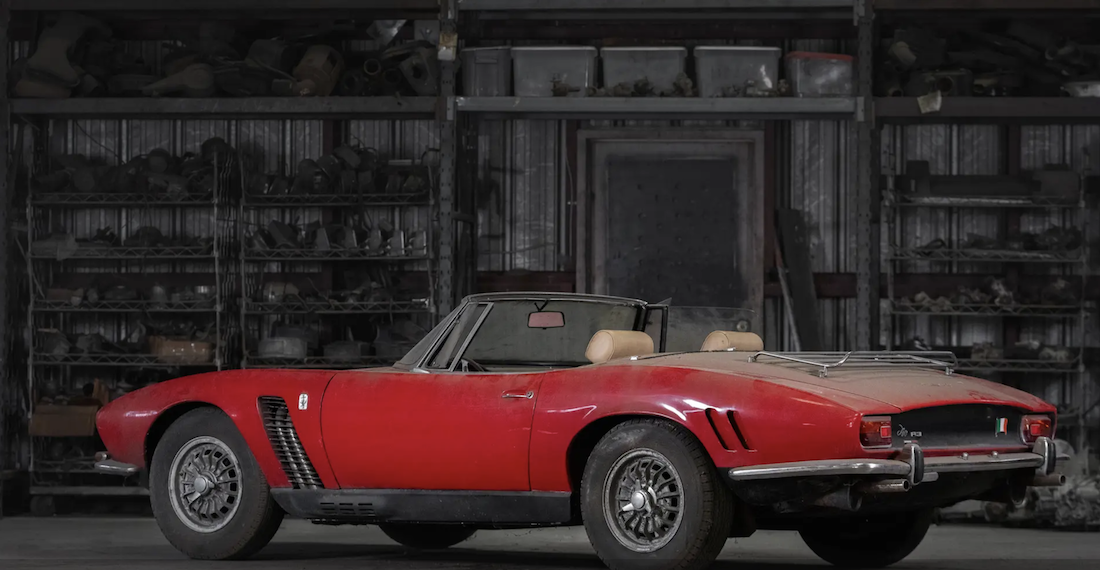

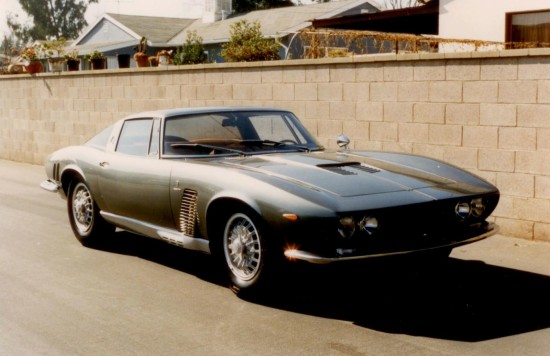
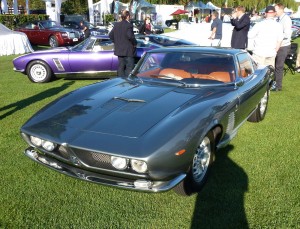
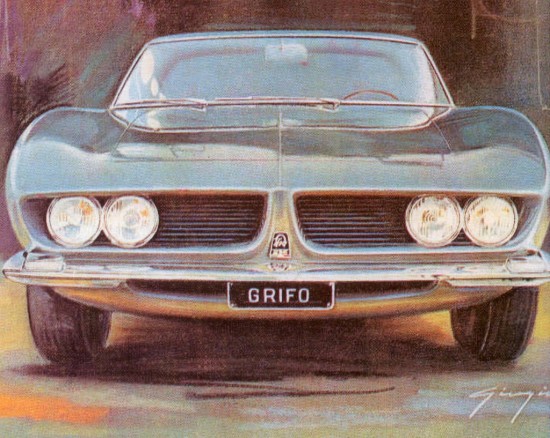
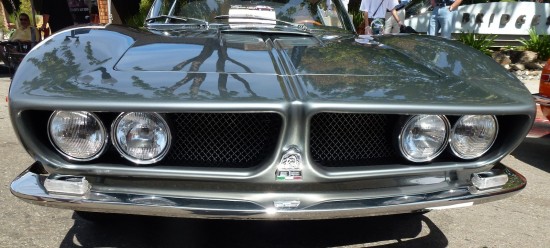
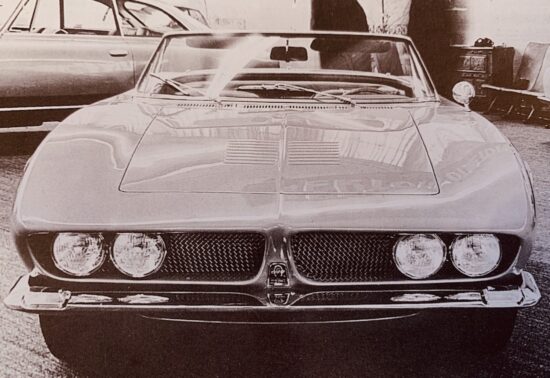
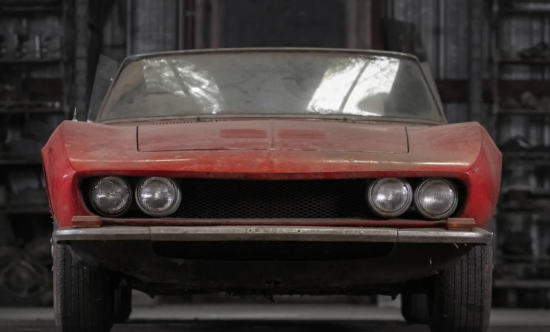
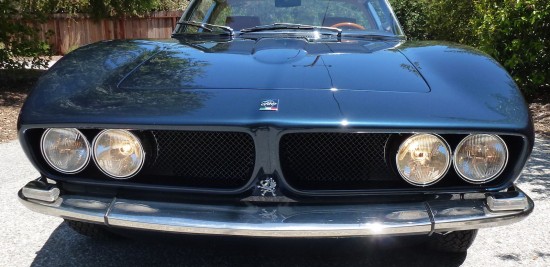

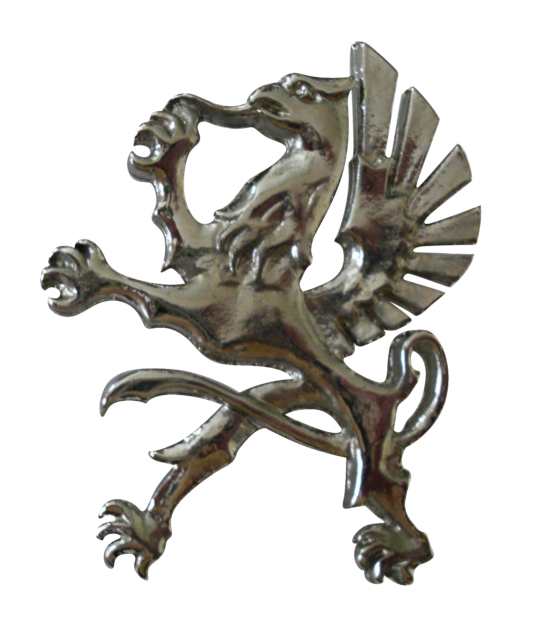


A very exciting sale and good for the marque! Any idea who the proud new owner is?
I do not know who the new owner is.
Mike, given that the Iso Grifo targas had no bracing between the front and rear, with much the same chassis, I think this will be just as stiff (or not stiff) as them.
I am really looking forward to this car being returned to its original Bertone form.
Mike,
Great article as always. They’ll be a lot of other interesting and incredibly rare finds coming out of that Rudi Klein junkyard collection by Sotheby’s.in South Central.
Glenn in Brooklyn, NY
The Spider went into the same stable as the A3/L Coupe resides in. Actually the best caregiver as lots of research has already been done to restore the coupe, that info can be used to resurrect this spider too.
Peter, the chassis of these two Bertone (not Iso) built prototypes are very different and remind me of a Bizzarrini Strada chassis. If you look at the chassis beams you see the difference, so IMHO it will show flex but is not really comparable to the “weak” Targa chassis.
To me, the car’s condition– when I saw it all rusty under the hood in a Culver City showroom for $22000– turned me off so bad I couldn’t see it worth reviving. Boy , was that a mistake! But I think getting the nose like it was originally will be tough because it’s different from the mass produced Grifos. Still I welcome the effort to come in restoring it and hope to see it at the Quail or Pebble in the next year or two, i think the first prototype should still be worth more than the roadster because it is .after all, the first of the breed,